July 8-18, 2019
IUGG General Assembly, Montreal, Canada
Abstract
Climate change will most likely cause an increase of extreme precipitation and consequently an increase of soil erosion in many locations worldwide. Different soil erosion model concepts are used to assess the impact of climate change on soil erosion at large spatial scales, such empirical and process-based models. However, there is little knowledge of the implications of model concepts on projected soil erosion rates. Here we assessed the impact of climate change with the 3 most used soil erosion model concepts, i.e. empirical with yearly time steps (RUSLE), empirical with daily time steps (MUSLE) and process-based with daily time steps (SPHY-MMF). We applied the models to 2 contrasting Mediterranean catchments (SE Spain), where climate change is projected to significantly decrease the annual precipitation sum (Sierra de Segura) or significantly increase extreme precipitation (Guadalentin), based on the RCP8.5 climate change scenario. Depending on the model, soil erosion is projected to decrease or increase in the study area, where RUSLE projects a significant decrease, MUSLE a significant increase and MMF a significant increase in only 1 of the catchments. The differences between the model projections are inherently a result of their model concept, such as a low temporal resolution (RUSLE) and the exclusion of crucial soil erosion processes (MUSLE). To assess the impact of climate change on soil erosion, it is important to select a soil erosion model that runs at an appropriate temporal resolution and accounts for the most relevant processes that may be affected by climate change.
×
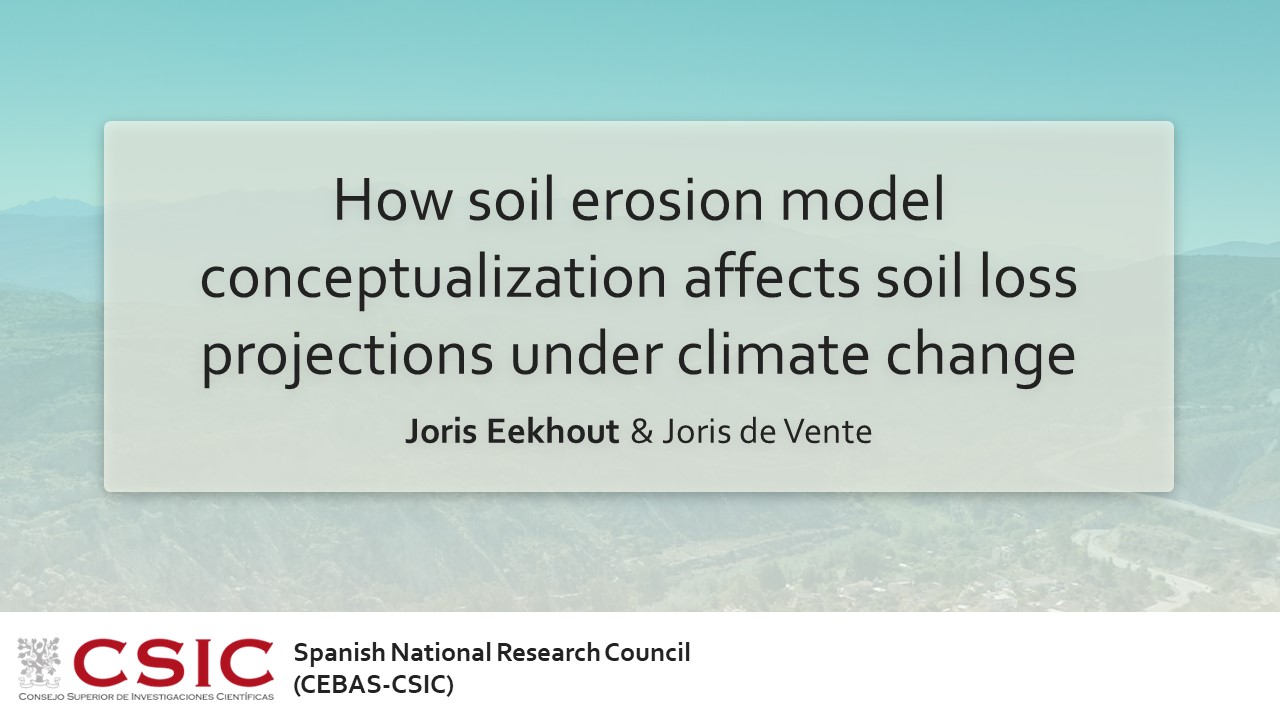

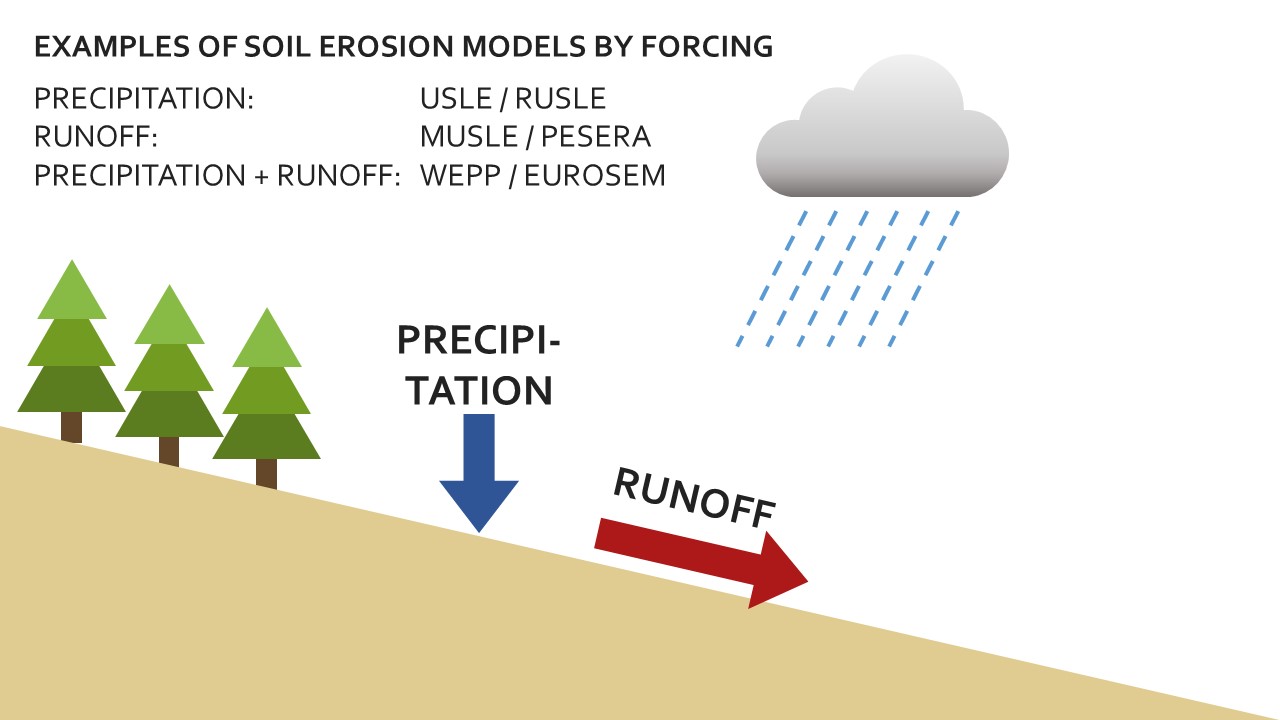
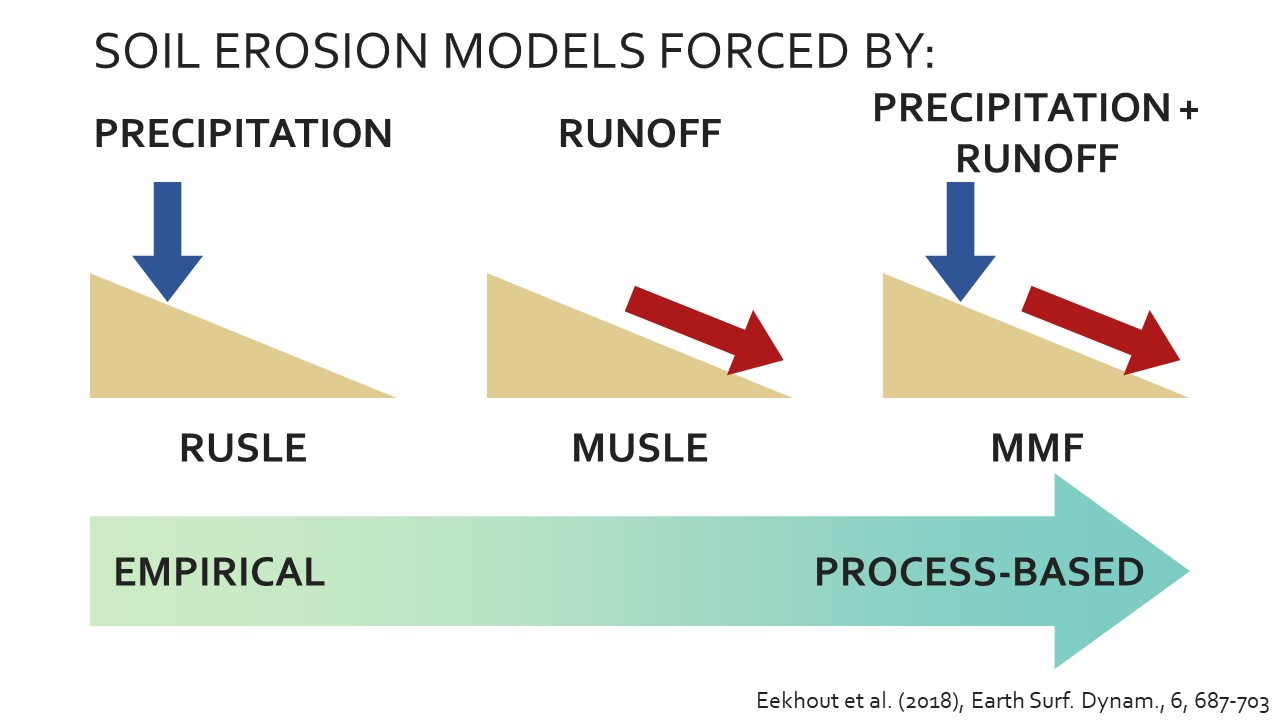
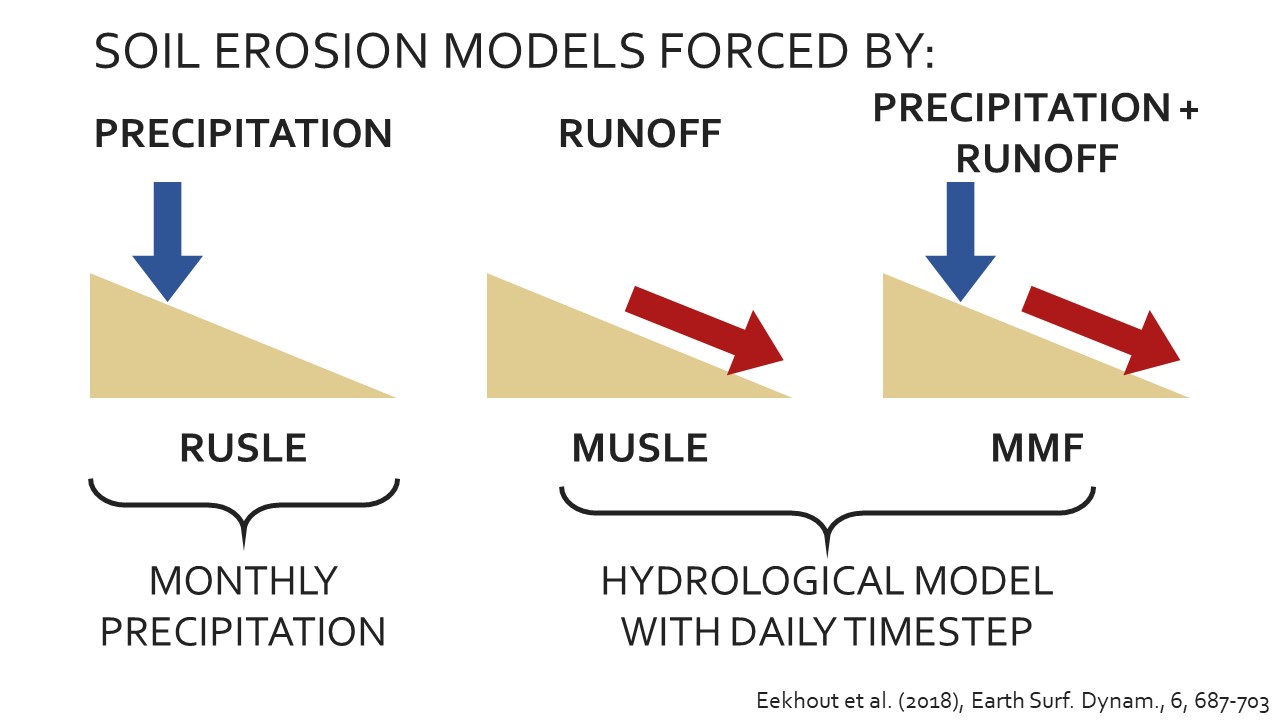
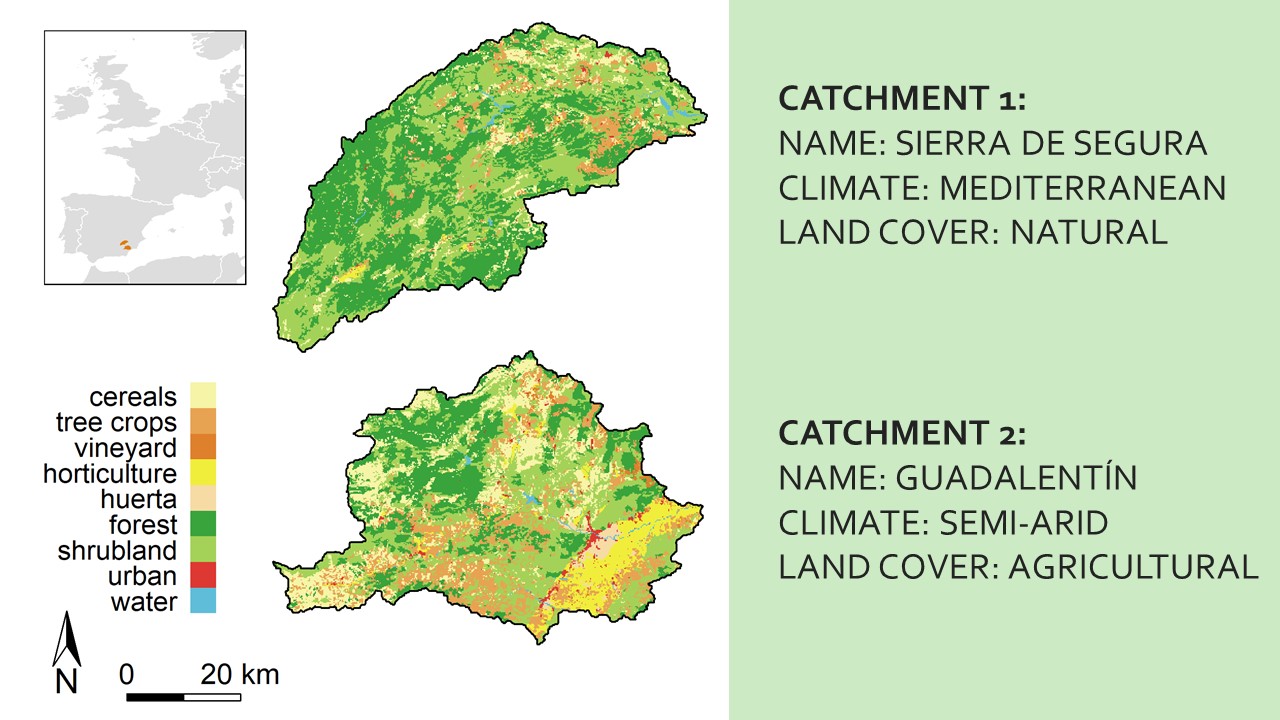
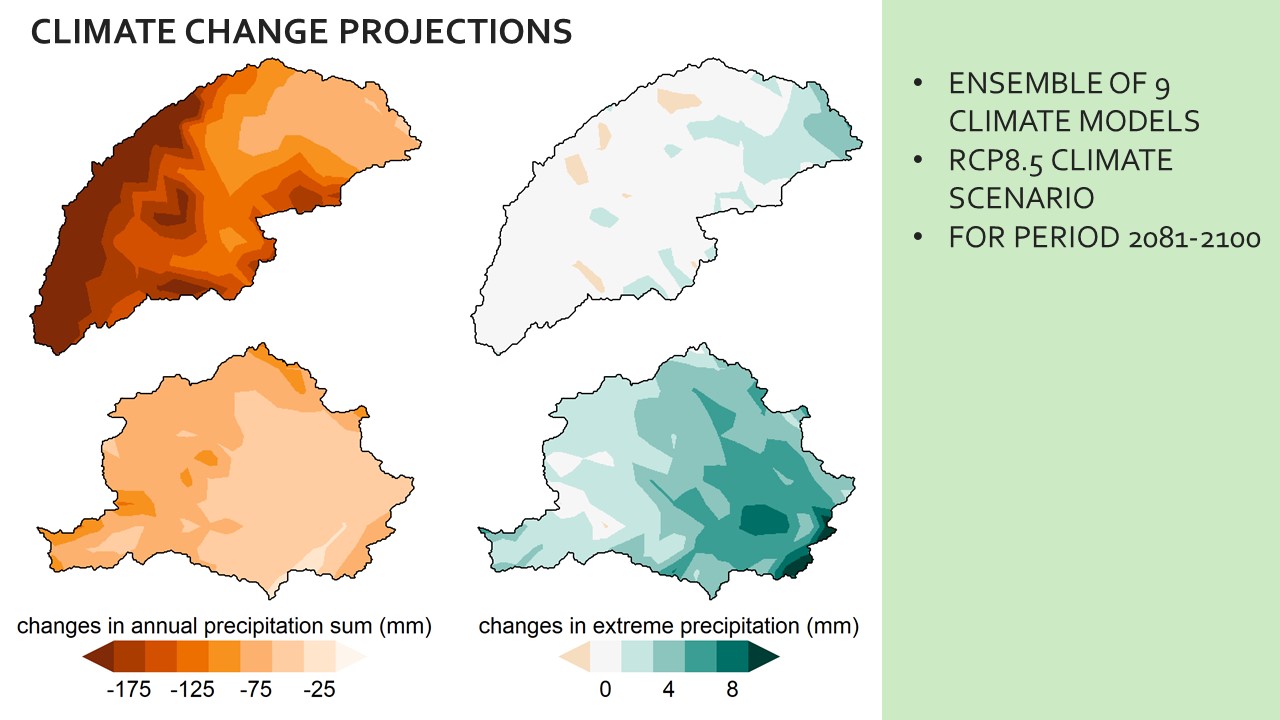
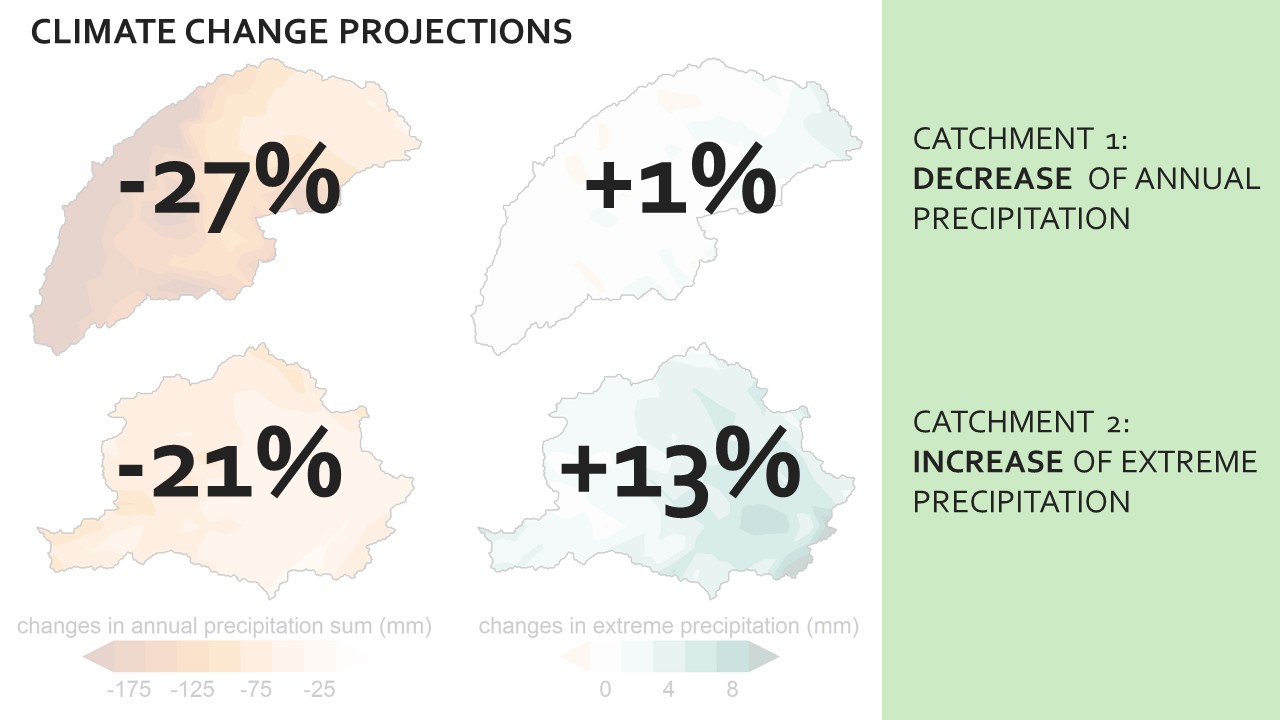
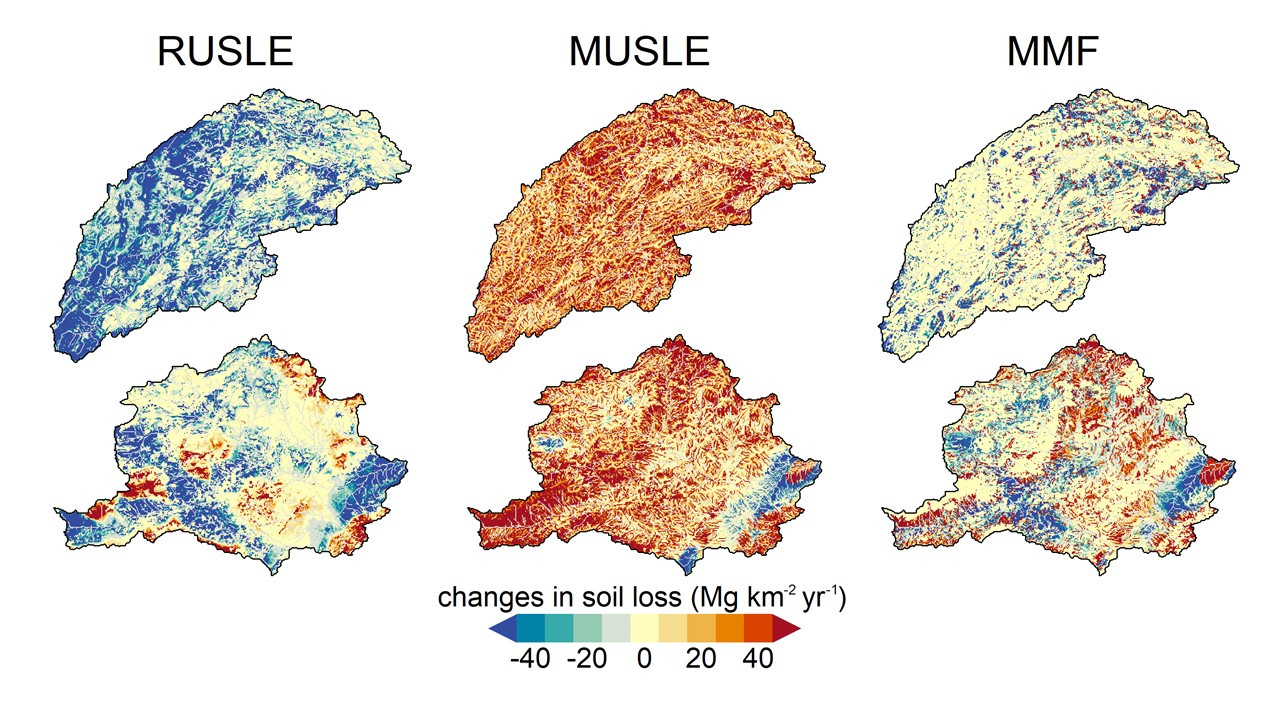





1/14
Here we present the results of a soil erosion model comparison study, with a focus on the impact of climate change on soil loss projections.
2/14
How will climate change affect soil erosion? Warmer air is able to hold more moisture than colder air. So larger clouds can form, increasing the risk of extreme precipitation events. This has important implications for soil erosion, which is for a large part driven by extreme precipitation.
3/14
Although some other methods have been applied, most studies apply a soil erosion model, forced by future climate projections from climate models. Basically, soil erosion models are either forced by precipitation, e.g. USLE and RUSLE. Forced by runoff, e.g. MUSLE and PESERA. Or combination of the two, e.g. WEPP and EUROSEM.
4/14
Here, we aim to assess how differences in soil erosion model conceptualization affect soil loss projections under climate change. We have selected three soil erosion models for this study, each representing a model concept, i.e. RUSLE (forced by precipitation), MUSLE (runoff) and Morgen-Morgan-Finney (precipitation and runoff).
5/14
RUSLE is one of the most applied soil erosion models, here we apply the model with monthly averaged precipitation forcing. The runoff used for MUSLE and MMF was obtained from a hydrological model.
6/14
The models were applied in two large catchments in southeast Spain. One catchment is characterized with a Mediterranean climate and mostly natural land cover. The other catchment is characterized with a semi-arid climate and mostly agricultural land cover.
7/14
We applied an ensemble of 9 climate models from the RCP8.5 climate change scenario for the period 2081-2100. The results are compared to a reference scenario for the period 1981-2000. These maps show how the climate change scenario affects the annual precipitation sum and extreme precipitation in the two catchments.
8/14
Precipitation sum is projected to decrease, with 27% and 21%. However, extreme precipitation is projected to increase, with 1% and 13%. Hence, catchment 1 can be most characterized by a decrease of annual precipitation and catchment 2 by an increase of extreme precipitation.
9/14
Here I will show the results of the soil loss projections for each of the three soil erosion models. In the maps, the blue colors indicate a decrease of soil loss and red colors an increase. On average RUSLE projects a decrease of soil loss, most evident in catchment 1 where most decrease of precipitation sum is projected.
10/14
MUSLE on the other hand projects an increase in both catchments, which is most pronounced where most water accumulates, and with a catchment average of around 85% in both catchments. MMF projects a mixed result, with areas where soil loss is projected to increase and other areas where it is projected to decrease, but on average an increase of soil loss is projected.
11/14
Since MMF determines both detachment by raindrop impact and by runoff, we can show the results of both detachment processes individually. The results from the detachment by raindrop impact show large similarities with the results from RUSLE, with a decrease in both catchments.
12/14
However, an increase of detachment by raindrop impact in parts of catchment 2 is projected. Detachment by runoff is projected to increase, similar to the results from MUSLE.
13/14
Of course, we cannot validate the results, but is very important to consider the climate signal before assessing the impact of climate change on soil erosion with a soil erosion model. In this case, climate change results in a decrease of precipitation sum, but an increase of extreme precipitation.
14/14
An opposing climate change signal as shown here, could have a profound impact on the outcome of soil erosion models. Therefore, we conclude that in case of opposing changes in precipitation sum and extreme precipitation, soil erosion is best assessed with a soil erosion model forced by both precipitation and runoff.